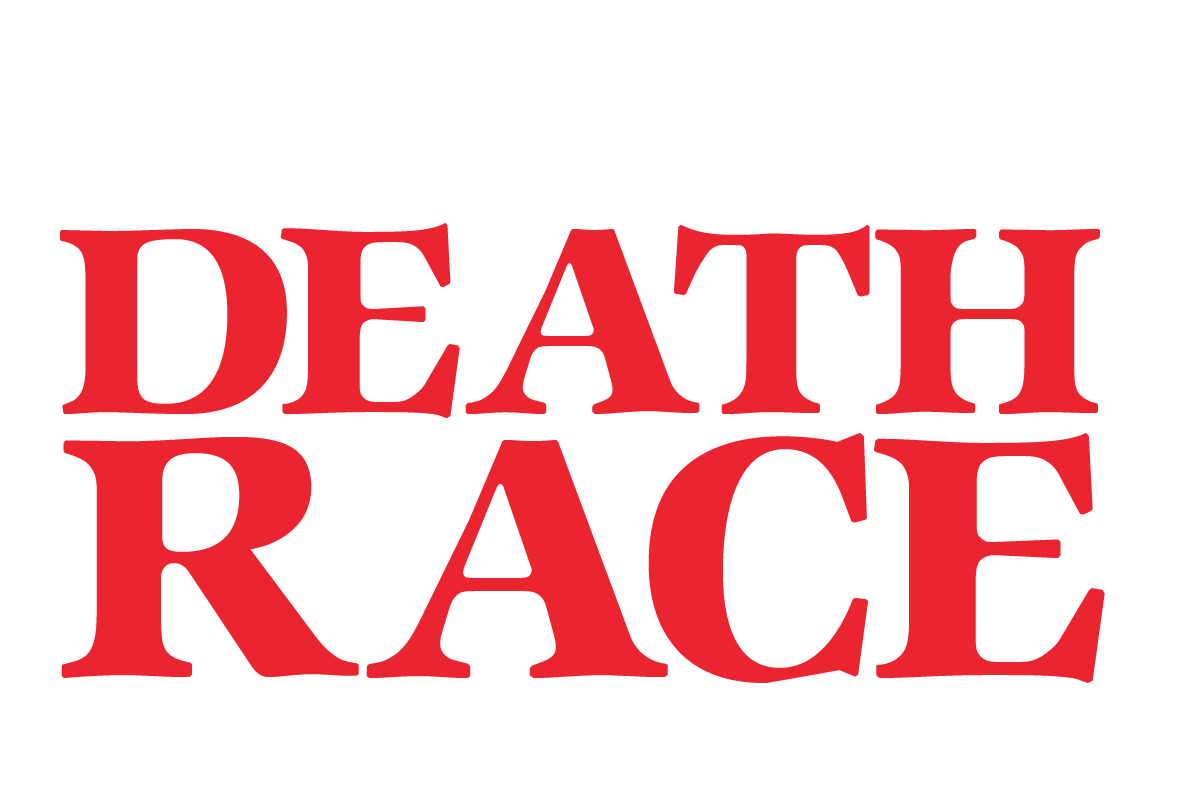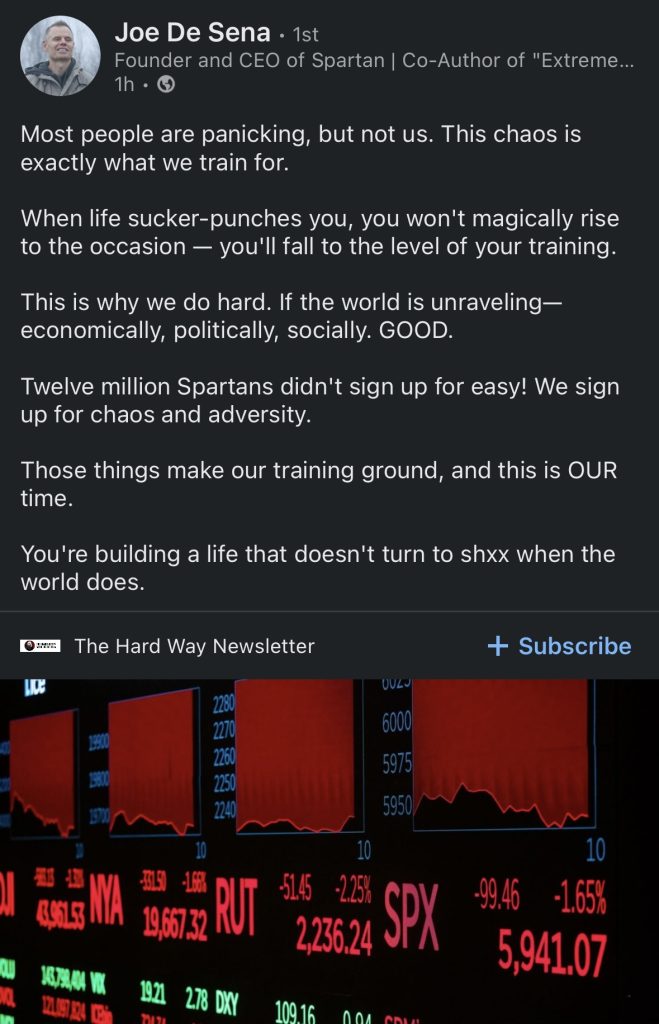Recently, Joe De Sena shared a post celebrating the chaos of our current moment—economic downturns, political instability, and societal strain—as if it were all part of some glorious training plan. He wrote, “This is exactly what we train for,” casting suffering as a badge of honor for those who’ve supposedly prepared to thrive in it.
But here’s the thing: not everyone had the privilege to “train” for this. And not all storms are best met with war cries.
This isn’t an attack. Joe has done a lot of good and inspired many. But the louder his message gets, the more it begins to sound less like leadership and more like performance. And in that noise, something important is lost—respect, context, and empathy.
There’s a difference between strength and spectacle.
I’m not writing this to undermine anyone’s movement. I’m writing it because I’ve seen what happens when we sell hardship as a product. I’ve lived through real chaos—unexpected layoffs, including one from Spartan itself, scraping by on food stamps, building a business from scratch with no financial cushion. There was no team of trainers, no war room of investors, just grit and sleepless nights.
And I know how damaging it can be to hear that your suffering is somehow just a test you weren’t tough enough to pass.
I didn’t “rise to the occasion.” I clawed my way through it.
Stoicism teaches us to face adversity—not glamorize it. It’s not about pretending the storm doesn’t matter. It’s about standing in the rain with your eyes open, choosing action over panic, discipline over despair.
Real training doesn’t look like flexing on social media while the world burns—it looks like paying your crew before paying yourself. It looks like getting up when you don’t feel strong, because people are counting on you. It’s quiet. Steady. Unshakable.
This is not a game.
When people lose their jobs, homes, or hope—it’s not a “test.” It’s not a stage for performative grit. It’s a reminder that strength must be earned in the shadows, not declared in the spotlight.
And no, not everyone “signed up” for this. Many were dropped into chaos without a roadmap, without a buffer. But they endured. They adapted. They kept going—not because they trained for chaos, but because they had no choice.
In a storm, the loudest voice isn’t always the strongest.
Sometimes strength is silence. Sometimes it’s service. Sometimes it’s simply showing up when it would be easier to disappear.
That’s what I wrote about in Dancing with Death and the Dow—not a victory lap, but a reflection. On grit, yes—but also on grace. On finding footing when the ground crumbles beneath you.
But here’s something else I’ve learned—resilience isn’t just individual. In the hardest times, you don’t isolate—you gather. You build strength through community, through the people willing to shoulder the weight with you. When I taught teamwork at Spartan, we talked a lot about grit and shared suffering—but what matters more than the fire is who you bring with you into it. Now more than ever, it’s about coming together, lifting each other up, and remembering that strength isn’t about doing it alone. It’s about refusing to let anyone fall behind.
Some of you may remember the Warrior Ethos from the Hurricane Heats.
I will always place the mission first.
I will never accept defeat.
I will never quit.
I will never leave a fallen comrade.
If your instinct in chaos is to shout “GOOD,” fine. But understand this: real leadership doesn’t glorify the storm—it helps people find shelter in it.
And real strength?
It doesn’t need to prove anything.
It just endures.


